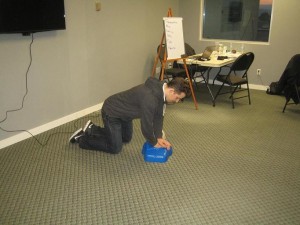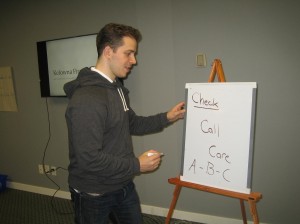Asphyxial arrest in children

When adults experience cardiac arrest, the cause is usually a pre-existing cardiac condition. The adult may have had a heart disease or experienced a sudden stroke. These are all cardiac in nature. However, cardiac arrest in children is often not caused by a cardiac condition. Cardiac arrest in children – correctly termed asphyxial arrest – is most commonly caused by respiratory problems and eventual respiratory failure. This changes a few key points when giving CPR to an infant or child who has gone into arrest.
Respiratory failure
Respiratory failure is characterized by poor ventilation, oxygenation, or both. We teach trainees how to anticipate respiratory failure if any of the following characteristics are present:
- Increased RR (respiratory rate) with signs of distress such as nasal flaring, retractions, see-saw breathing, and grunting
- Decreased RR, effort, and chest excursion, with diminished breath sounds, gasping, and depressed level of consciousness
- Cyanosis (pallor to bluish tinge of the mucous membranes and skin) even with supplementary oxygen
The PALS program

The PALS training program is a two-day training course with a total of 14 class hours. Students are taught how to recognize cardiac arrest in children, especially warning signs that CA is about to occur. Because respiratory problems are the most common causes of arrest in children, a lot of focus is given to ventilatory management.
Chest compressions are still done first but rescue breaths are as just as, if not more important. Ensuring that a patient has an open airway is very important when rescue breaths are given to children, especially infants whose organ systems are still immature. When you enrol in a PALS course, you learn how to give CPR to an infant and younger children.
- CPR for infants is done with two thumbs when the hands encircle the chest or with the pointer and middle fingers.
- The chest of an infant is depressed by 4 centimeters while the chest of a child and adult is depressed by 5 centimeters.
- The compression:ventilation ratio in children is 15:1.
The PALS training program is 14 hours over two days, with a re-certification class that is either 6 hours and 20 minutes or 8 hours and 20 minutes. The difference between the two program lengths depends on the optional stations a trainee chooses to take or not take.
CPR training certificate
CPR training certificates are valid for two years before they need to be renewed. However, because studies have shown that CPR skills become less effective if they are not practiced or updated, we require students to take re-certification classes to renew their credentials. If the student lets his or her credential expire, we cannot qualify them for a re-certification class; they have to take the training program again.